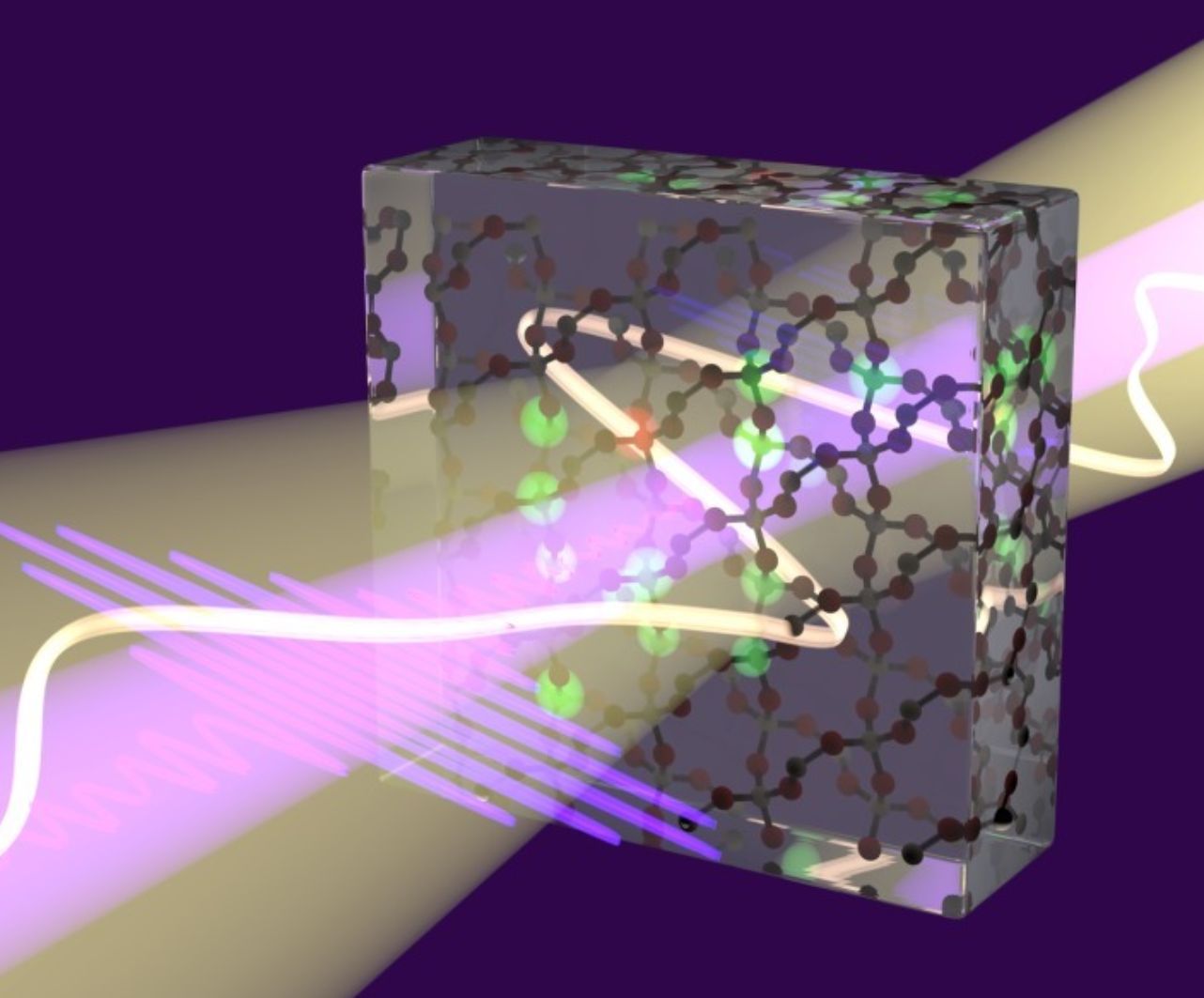Quantum ‘doorway states’ finally explain mysterious electron behavior in solids
Scientists from Vienna University of Technology discover “doorway states” that let electrons escape from layered materials like graphene.

A new study reveals that electrons don’t just need energy to escape solids — they need the right “doorway state.” (CREDIT: MPQ, Attoelectronics Group)
If you picture an electron breaking free from a solid, the process seems simple. Give it enough energy, and it should blast off into space. But a team of researchers from TU Wien and their colleagues found that it's not so simple.
Their work demonstrates that electrons need more than energy — they need the right kind of "exit," known as a doorway state.
Cracking the Mystery of Electron Escape
Researchers have been baffled for decades over how electrons exit solids after being struck by incident particles. In secondary electron emission, a primary electron collides with the surface of a material and transfers energy to allow other electrons — secondary ones — to escape. The phenomenon underlies a plethora of technologies, including electron and helium-ion microscopes, in which image contrast typically depends on those emitted electrons.
Nevertheless, despite its importance, the process was not fully understood. "One would imagine that all these electrons, once they've got enough energy, simply escape from the material," said Prof. Richard Wilhelm of the Atomic and Plasma Physics group at TU Wien. "If that were true, life would be simple. But, as it turns out, that's not what happens."
A Frog, a Box, and a Quantum Problem
To explain, the group offered a simple analogy. Imagine a frog in a box with an opening at the top. The frog can have the energy to jump as high as the opening, but unless it also jumps through the hole, it is still trapped. Similarly, electrons in a solid can gain the energy to leave but are still trapped without an appropriate "doorway" to the outside.
That observation was the result of advanced experiment and computer simulation. Using coincidence detection — a technique that observes both incoming and outgoing electrons simultaneously — the researchers uncovered sharp peaks in the energy spectra. These peaks, known as resonances, had been missed in earlier work. Those resonances were the signature of doorway states: special quantum states that connect electrons in the material to external states in the vacuum.
Why Layers Matter
The study focused on layered carbon materials such as graphene and highly oriented pyrolytic graphite (HOPG). The scientists tested single-layer graphene, bilayer graphene, and bulk graphite. They noticed something dramatic — the thicker the material, the more pronounced the doorway states became.
In single-layer graphene, those states were essentially nonexistent. But by the time the researchers reached samples with more than five layers, clear resonant peaks showed up in the emission spectra. That meant electrons in thicker materials had more "open doors" through which they could escape.
Using density functional theory (DFT), the researchers modeled how electrons behave. This computational approach revealed that the doorway states arise from interactions between the layers. In other words, electrons can get trapped and resonate between the layers to form states that couple with the vacuum and act as escape channels.
The electrons must be in very particular states — so-called doorway states," explained Prof. Florian Libisch from the Institute for Theoretical Physics at TU Wien. "These states are strongly coupled to those which actually lead out of the solid. Not every state with enough energy is such a doorway state — only those which are an open door to the outside."
From Smooth Spectra to Sharp Peaks
Secondary electron emission spectra are normally smooth and unfeatured. But when the research team combined coincidence detection with careful analysis, they revealed sharp resonant peaks hiding in the background. In HOPG, for example, they discovered a robust resonance at approximately 3.3 electron volts above the vacuum level. Meanwhile bilayer graphene had a peak at approximately 7.7 eV.
Those details matter. They show that the number of layers and the internal quantum structure determine not only how many electrons escape but also at what energies. “For the first time, we’ve shown that the shape of the electron spectrum depends not only on the material itself but crucially on whether and where such resonant doorway states exist,” said first author Anna Niggas of TU Wien’s Institute of Applied Physics.
Redefining Electron Emission
Thus far, most theories focused mainly on the energy threshold — how much energy electrons need to have in order to escape. This new work changes that image entirely. It shows that the determining factor is whether electrons can couple to the right states in the material that connect to free space.
This has far-reaching implications. In thin materials, electrons may have enough energy but are stuck since the necessary doorway states are not available. In thicker materials, more and more such resonant states form, and effective escape becomes feasible.
The study also explains why two materials with almost the same energy levels can exhibit such different behavior in experiments. The differences in their emissions are due not to energy but to the presence — or lack — of these elusive doorway states.
The Quantum "Open Door"
The discovery reconfigures the manner in which scientists and engineers think about creating layered materials for use in nanotechnology and microscopy. By modifying the interlayer spacing or number of layers, researchers may be able to create materials that control electron emission with unprecedented accuracy.
Future studies look forward to observing how substrates, defects, or temperature influence doorway states. It is hoped that with control of this mastery, more effective electron sources, sensitive detectors, and even novel quantum devices can be created.
Practical Implications of the Study
Understanding doorway states gives researchers a new dial for controlling the inflow and outflow of electrons from solids — a development with practical payoff.
A better understanding of electron emission could improve imaging in electron microscopes. It may also make nanoscale sensors more sensitive and guide the design of more efficient electronic materials.
A better understanding might even lead to better ways to shield sensitive equipment from radiation damage. That could also help develop future quantum devices, where precise control of electron flow is essential.
Research findings are available online in the journal Physical Review Letters.
Related Stories
- Quantum state of electrons measured for the first time ever
- In a global first, scientists control electrons with twisted light
- Science breakthrough: Researchers make electrons visible in slow motion
Like these kind of feel good stories? Get The Brighter Side of News' newsletter.
Mac Oliveau
Science & Technology Writer
Mac Oliveau is a Los Angeles–based science and technology journalist for The Brighter Side of News, an online publication focused on uplifting, transformative stories from around the globe. Passionate about spotlighting groundbreaking discoveries and innovations, Mac covers a broad spectrum of topics—from medical breakthroughs and artificial intelligence to green tech and archeology. With a talent for making complex science clear and compelling, they connect readers to the advancements shaping a brighter, more hopeful future.



